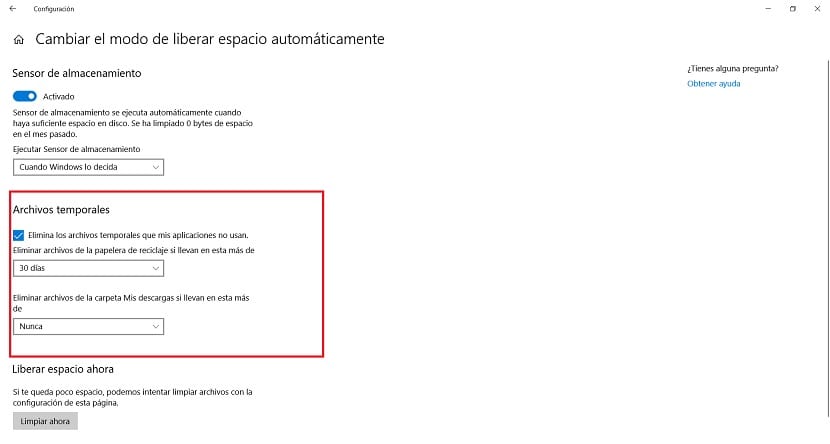
Continued use of the computer causes Windows 10 accumulates temporary files. In the operating system a folder called Temp is created, which is where we find all these files that accumulate over time. With frequent use of the computer, this folder can grow rapidly and become huge. Which in the end means that it takes up a lot of space on the hard disk. Maybe too much.
Therefore, it is recommended to proceed to delete these temporary files from Windows 10 with some frequency. Here we tell you more about the reasons why it is good to do this. Also the way in which these temporary files can be deleted from the computer.
Why delete temporary files
The main motive in this regard is clear. It's about being able to save space in Windows 10. Since with the passage of time huge amounts of temporary files end up accumulating on the computer. Although in the beginning they usually have a specific function or utility, with the passage of time this changes. So they end up taking up meaningless space on your computer. So it is recommended to delete them.

A folder called Temp is created on the computer, which is where we find these temporary files. Many programs that we have installed in Windows 10 create them. This is something that is done to have control over the progress of users. They allow to undo changes in some programs, since they save previous versions. In addition, the browser that we use on the computer also generates these types of files.
In your case, they are elements such as data that are stored in Windows 10. They can also be photos or data from a specific website. The idea of this is that the next time you go to visit a specific website, the page will load faster, because these temporary files are on the computer. For this reason, in these types of actions they do have a specific utility, which allows us to load some pages, the ones we visit more frequently, faster.
So deleting these temporary files can have some consequences, as you can imagine. Some websites may load slow at first, until new temporary files are generated. Also, in the case of document apps like Word, previous versions of some documents may be lost. Although the moment we use these programs again in Windows 10, temporary files will be generated again.
How to delete temporary files in Windows 10

We can delete manually the temporary files that accumulate in Windows 10. It is a very easy process to carry out. Therefore, if we are interested in doing this, we only have to follow a few steps. If you have never done it before, it is likely that the amount of files that have accumulated is enormous. Which takes up a lot of disk space.
You must first enter the Windows 10 settings, using the Win + I key combination. Within it we have to go to the system section, which is the first one that appears on the screen. In this section, we look at the column that appears on the left side of the screen. One of the options in it is Storage. We then click on this option.
In this section we have to activate a section called Storage Sense, where we see that there is a switch. We turn it on, in case it was off. This assumes that we have enabled temporary files to be automatically deleted in Windows 10. We now need to determine the frequency. To do this, click on Change the way to free up space automatically.
Here you will be able to choose how often you want this to happen on your computer. So choose the option that suits you best. They can be weekly, monthly or whatever you want. On the other hand, you also have to check the option Delete temporary files that my apps don't use. In this way, the entire process has been configured.